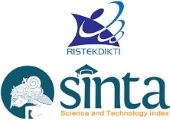Penerimaan Teknologi Virtual Reality Untuk Virtual Tourism di Indonesia
Abstract
ABSTRACT
Over the last few years, the technology of tourism has grown significantly. Technology that is still relatively new in tourism is Virtual Reality (VR). VR technology is a solution, especially during the current pandemic, where many tourist attractions are closed. The novelty of the experience offered by VR is still relatively new and its acceptance in tourism still needs to be explored further. This study aims to determine the determinants of the acceptance of VR technology for virtual tourism by examining the effect of seven independent variables on one dependent variable Behavioral Intention to Use VR in Tourism. This study uses a quantitative approach using primary data obtained through the distribution of online questionnaires with 246 respondents filling out this questionnaire. The data processing technique of this research uses the Statistical Package for Social Science (SPSS) software. The analytical method used by the researcher is multiple linear regression analysis. The results showed that all variables used in this study had a significant effect on adoption intentions. Six variables had a positive effect and one variable had a negative effect.
ABSTRAK
Selama beberapa tahun terakhir, teknologi pariwisata telah berkembang secara signifikan. Teknologi yang masih tergolong baru dalam dunia pariwisata adalah Virtual Reality (VR). Teknologi Virtual Reality (VR) menjadi solusi, terutama di masa pandemi saat ini, dimana banyak tempat wisata ditutup. Kebaruan pengalaman yang ditawarkan oleh VR masih relatif baru dan penerimaannya dalam pariwisata masih perlu dieksplorasi lebih lanjut. Penelitian ini bertujuan untuk mengetahui determinan penerimaan teknologi VR untuk pariwisata virtual dengan menguji pengaruh tujuh variabel independen (Perceived Enjoyment, Perceived Immersion, Technology Anxiety, Social Influence, dan Sensation Seeking.) terhadap satu variabel dependen Behavioral Intention to Use VR in Tourism. Penelitian ini menggunakan pendekatan kuantitatif dengan menggunakan data primer yang diperoleh melalui penyebaran kuesioner online dengan metode snowball sampling. 246 responden dinyatakan memenuhi syarat sebagai sample. Responden terdiri dari masyarakat umum dengan umur lebih dari 15 tahun yang mengetahui tentang Teknologi Virtual Reality. Teknik pengolahan data penelitian ini menggunakan software Statistical Package for Social Science (SPSS) versi 24.0. Metode analisis yang digunakan adalah regresi linier berganda. Hasil penelitian menunjukkan bahwa semua variabel yang digunakan dalam penelitian ini berpengaruh signifikan terhadap niat adopsi, dengan enam variabel berpengaruh positif dan satu variabel berpengaruh negatif.
Keywords
Full Text:
PDFReferences
Alfansi, L., & Daulay, M. Y. I. (2021). Factor affecting the use of e-money in millennial generation: Research model UTAUT 2. Jurnal Manajemen Dan Pemasaran Jasa, 14(1), 109–122. https://doi.org/10.25105/jmpj.v14i1.8212
Bahli, B., & Benslimane, Y. (2004). An exploration of wireless commputing risks: Development of a risk taxonomy. Information Management and Computer Security, 12(3), 245–254. https://doi.org/10.1108/09685220410542606
Berger, H., Dittenbach, M., Merkl, D., Bogdanovych, A., Simoff, S., & Sierra, C. (2007). Opening new dimensions for e-Tourism. Virtual Reality, 11(2–3), 75–87. https://doi.org/10.1007/s10055-006-0057-z
Chan, L. S. (2017). Who uses dating apps? Exploring the relationships among trust, sensation-seeking, smartphone use, and the intent to use dating apps based on the Integrative Model. Computers in Human Behavior, 72, 246–258. https://doi.org/10.1016/j.chb.2017.02.053
Cho, Y., Wang, Y., & Daniel, R. (2002). Journal of Travel & Tourism Searching for Experiences. Tourism, 12–4(September 2014), 1–17. https://doi.org/10.1300/J073v12n04
Davis, F. D. (1985). A technology acceptance model for empirically testing new end-user information systems: Theory and results. Management, Ph.D.(May), 291. https://doi.org/oclc/56932490
Davis, F. D., Bagozzi, R. P., & Warshaw, P. R. (1992). Extrinsic and Intrinsic Motivation to Use Computers in the Workplace. Journal of Applied Social Psychology, 22(14), 1111–1132. https://doi.org/10.1111/j.1559-1816.1992.tb00945.x
Disztinger, P., Schl, S., & Groth, A. (2017). Information and Communication Technologies in Tourism 2017. Information and Communication Technologies in Tourism 2017. https://doi.org/10.1007/978-3-319-51168-9
Gass, R. H. (2015). Social Influence, Sociology of. In International Encyclopedia of the Social & Behavioral Sciences: Second Edition (Second Edi, Vol. 22, Issue 1935). Elsevier. https://doi.org/10.1016/B978-0-08-097086-8.32074-8
Gutierrez, N., Avila, C. M., Rodriguez-Suarez, C., Moreno, M. T., & Torres, A. M. (2007). Development of SCAR markers linked to a gene controlling absence of tannins in faba bean. Molecular Breeding, 19(4), 305–314. https://doi.org/10.1007/s11032-006-9063-9
Hair, Joseph F. , Black, Jr, William C. Babin, Barry J. & Anderson, R. E. (2014). Pearson - Multivariate Data Analysis, 7/E - Joseph F. Hair, Jr, William C. Black, Barry J. Babin & Rolph E. Anderson. Pearson New International Edition, 816.
Hillmann, C. (2019). Unreal for Mobile and Standalone VR. Unreal for Mobile and Standalone VR, 1–14. https://doi.org/10.1007/978-1-4842-4360-2
Huang, Y. C., Backman, S. J., Backman, K. F., & Moore, D. W. (2013). Exploring user acceptance of 3D virtual worlds in travel and tourism marketing. Tourism Management, 36, 490–501. https://doi.org/10.1016/j.tourman.2012.09.009
Kim, D. Y., Park, J., & Morrison, A. M. (2008). A model of traveller acceptance of mobile technology. International Journal of Tourism Research, 10(5), 393–407. https://doi.org/10.1002/jtr.669
Kim, H. W., Chan, H. C., & Gupta, S. (2007). Value-based Adoption of Mobile Internet: An empirical investigation. Decision Support Systems, 43(1), 111–126. https://doi.org/10.1016/j.dss.2005.05.009
Kim, J., Almanza, B., Ghiselli, R., & Sydnor, S. (2017). The effect of sensation seeking and emotional brand attachment on consumers’ intention to consume risky foods in restaurants. Journal of Foodservice Business Research, 20(3), 336–349. https://doi.org/10.1080/15378020.2016.1209721
Königstorfer, J., & Gröppel-Klein, A. (2007). Experiences of failure and anger whenusing the mobile and wired internet: The interference of acceptance-andresistance-driving factors. Marketing JRM, 27(1), 34–47.
Kulviwat, S., Bruner, G. C., & Al-Shuridah, O. (2009). The role of social influence on adoption of high tech innovations: The moderating effect of public/private consumption. Journal of Business Research, 62(7), 706–712. https://doi.org/10.1016/j.jbusres.2007.04.014
Lau, C. K. H., Chui, C. F. R., & Au, N. (2019). Examination of the adoption of augmented reality: a VAM approach. Asia Pacific Journal of Tourism Research, 24(10), 1005–1020. https://doi.org/10.1080/10941665.2019.1655076
Lee, Y., Kozar, K. A., & Larsen, K. R. T. (2003). The Technology Acceptance Model: Past, Present, and Future. Communications of the Association for Information Systems, 12(January 2003). https://doi.org/10.17705/1cais.01250
Leonard, K. M., Van Scotter, J. R., Pakdil, F., Chamseddine, N. J., Esatoglu, E., Gumus, M., Koyuncu, M., Ling Ling Wu, Mockaitis, A. I., Salciuviene, L., Oktem, M. K., Surkiene, G., & Tsai, F. S. (2011). Examining media effectiveness across cultures and national borders: A review and multilevel framework. International Journal of Cross Cultural Management, 11(1), 83–103. https://doi.org/10.1177/1470595810389790
Meuter, M. L., Bitner, M. J., Ostrom, A. L., & Brown, S. W. (2005). Choosing among alternative service delivery modes: An investigation of customer trial of self-service technologies. Journal of Marketing, 69(2), 61–83. https://doi.org/10.1509/jmkg.69.2.61.60759
Muhammad, R., Mutiarin, D., & Damanik, J. (2021). Virtual Tourism Sebagai Alternatif Wisata Saat Pandemi. Journal of Indonesian Tourism, Hospitality and Recreation, 4(1), 53–60. https://doi.org/10.17509/jithor.v4i1.31250
Naderifar, M., Goli, H., & Ghaljaie, F. (2017). Snowball Sampling: A Purposeful Method of Sampling in Qualitative Research. Strides in Development of Medical Education, 14(3). https://doi.org/10.5812/sdme.67670
Nah, F. F., & Hall, F. (2014). Flow in gaming : literature synthesis and framework development Brenda Eschenbrenner Qing Zeng and Venkata Rajasekhar Telaprolu Sepandar Sepehr. Int. J. Information Systems and Management, 1(2), 83–124. https://www.inderscienceonline.com/doi/pdf/10.1504/IJISAM.2014.062288
Perse, E. M. (1996). Sensation seeking and the use of television for arousal. International Journal of Phytoremediation, 21(1), 37–48. https://doi.org/10.1080/08934219609367633
Rose, T., Nam, C. S., & Chen, K. B. (2018). Immersion of virtual reality for rehabilitation - Review. Applied Ergonomics, 69(February 2017), 153–161. https://doi.org/10.1016/j.apergo.2018.01.009
Sanchez-Vives, M. V., & Slater, M. (2005). From presence to consciousness through virtual reality. Nature Reviews Neuroscience, 6(4), 332–339. https://doi.org/10.1038/nrn1651
Shen, J., Wang, Y., Chen, C., Nelson, M. R., & Yao, M. Z. (2020). Using virtual reality to promote the university brand: When do telepresence and system immersion matter? Journal of Marketing Communications, 26(4), 362–393. https://doi.org/10.1080/13527266.2019.1671480
Shin, D. (2019). How does immersion work in augmented reality games? A user-centric view of immersion and engagement. Information Communication and Society, 22(9), 1212–1229. https://doi.org/10.1080/1369118X.2017.1411519
Steuer, J. (1992). Defining Virtual Reality: Dimensions Determining Telepresence. Journal of Communication, 42(4), 73–93. https://doi.org/10.1111/j.1460-2466.1992.tb00812.x
tom Dieck, D., tom Dieck, M. C., Jung, T., & Moorhouse, N. (2018). Tourists’ virtual reality adoption: an exploratory study from Lake District National Park. Leisure Studies, 37(4), 371–383. https://doi.org/10.1080/02614367.2018.1466905
Tussyadiah, I. P., Wang, D., Jung, T. H., & tom Dieck, M. C. (2018). Virtual reality, presence, and attitude change: Empirical evidence from tourism. Tourism Management, 66, 140–154. https://doi.org/10.1016/j.tourman.2017.12.003
Veal, A. . (2018). Research methods for leisure and tourism. In Annals of Tourism Research.
Vishwakarma, P., Mukherjee, S., & Datta, B. (2020). Travelers’ intention to adopt virtual reality: A consumer value perspective. Journal of Destination Marketing and Management, 17(March), 100456. https://doi.org/10.1016/j.jdmm.2020.100456
Webster, J., Trevino, L. K., & Stein, E. (1996). Personal nature and ambiguity as sources of message equivocality: An extension of media richness theory. Proceedings of the Annual Hawaii International Conference on System Sciences, 3(September 2015), 34–40. https://doi.org/10.1109/HICSS.1996.493174
Yang, K., & Forney, J. C. (2013). The moderating role of consumer technology anxiety in mobile shopping adoption: differential effects of facilitating conditions and social influences. Journal of Electronic Commerce Research, 14(4), 334.
Yap, & Ng, X. H. (2018). (2018). 기사 (Article) 와 안내문 (Information) [. The Eletronic Library, 34(1), 1–5.
Yeh, N. C., Lin, J. C. C., & Lu, H. P. (2011). The moderating effect of social roles on user behaviour in virtual worlds. Online Information Review, 35(5), 747–769. https://doi.org/10.1108/14684521111176480
Yung, R., & Khoo-Lattimore, C. (2019). New realities: a systematic literature review on virtual reality and augmented reality in tourism research. Current Issues in Tourism, 22(17), 2056–2081. https://doi.org/10.1080/13683500.2017.1417359
DOI: https://doi.org/10.17509/jithor.v5i1.43751
Refbacks
- There are currently no refbacks.

This work is licensed under a Creative Commons Attribution-ShareAlike 4.0 International License.
eISSN : 2654-4687
pISSN : 2654-3893
This work is licensed under Creative Commons Attribution-ShareAlike 4.0 International License














